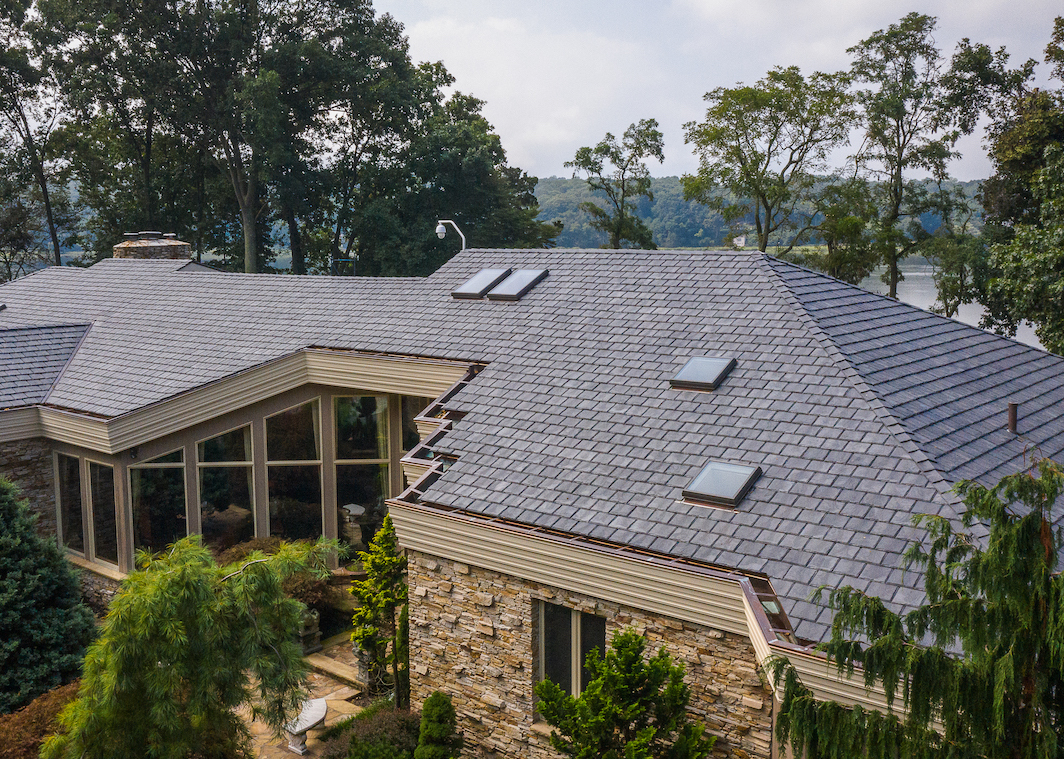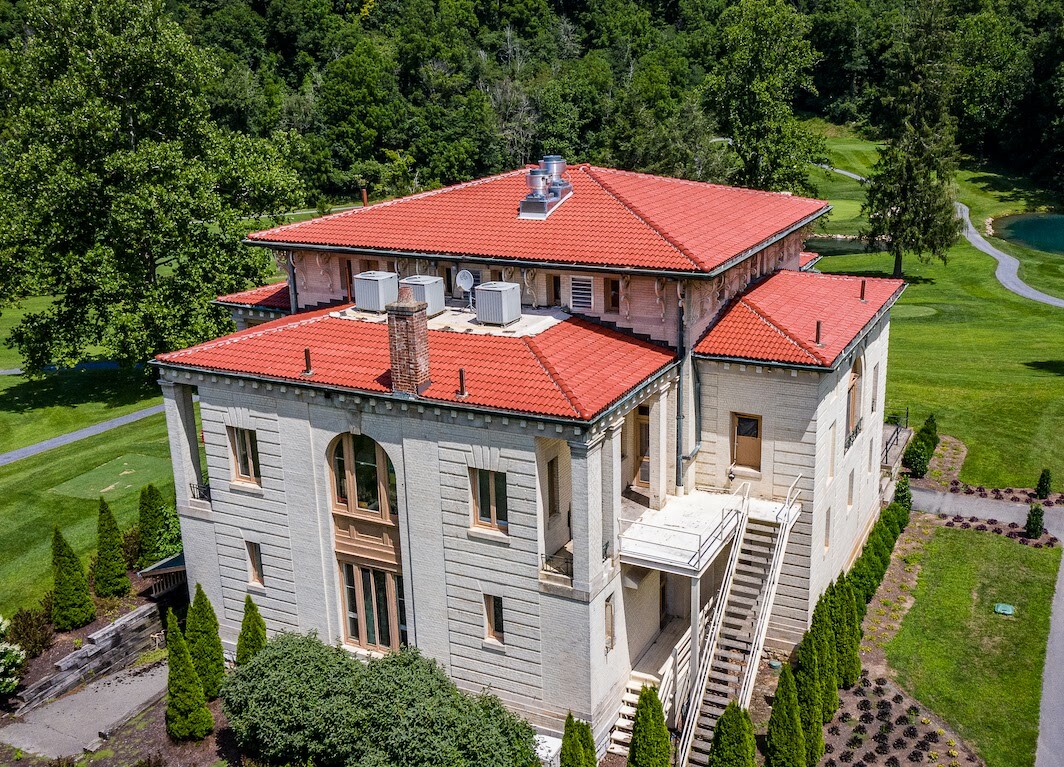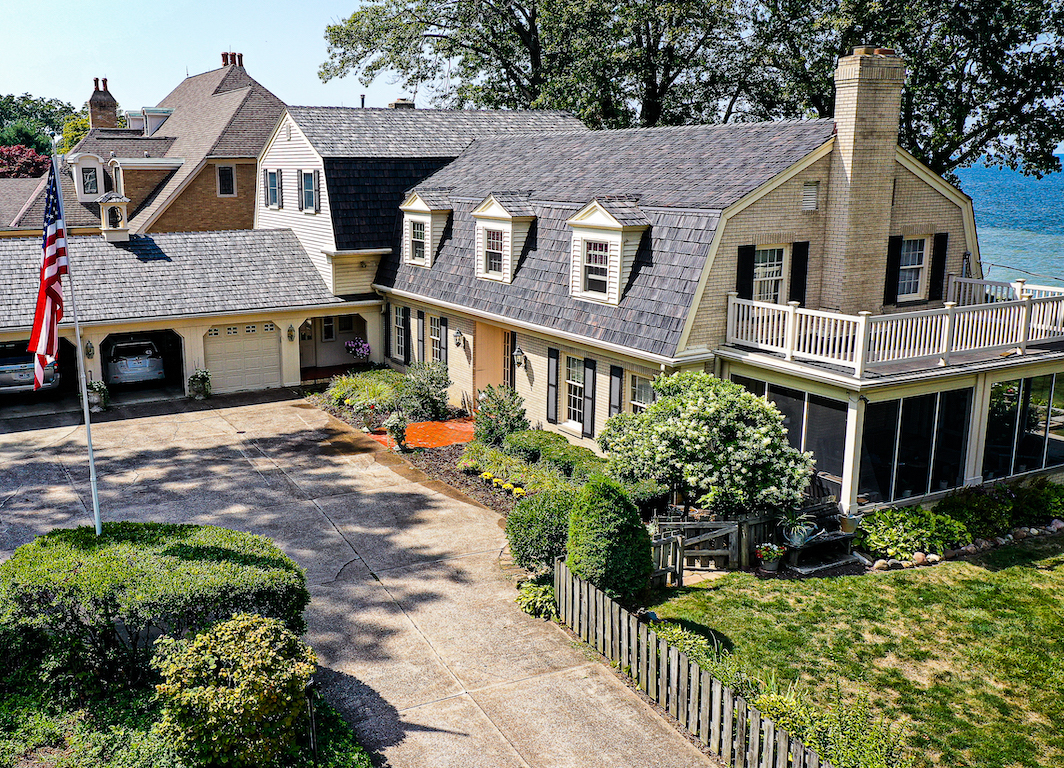Tile roofs have long been popular with American homeowners for their unique beauty and durability.
Unlike many other traditional roofing options such as asphalt shingles, a tile roof can last the lifetime of your home—withstanding punishing storms, hail and tree branches, and fire.
Traditionally, manufacturers made tile roofing from heavy natural materials like concrete, clay, or slate. While the tiles' heft contributed to their long life, it also made the tiles costly and tricky to install. For homes not engineered to bear the weight of these heavy tiles, having slabs of stone on the roof could cause severe structural damage.

Fortunately, modern technologies have enabled manufacturers today to be able to create lightweight roof tile alternatives without sacrificing their traditional beauty or durability. Lightweight roofing materials, specifically synthetic roof tiles, are less costly to install and don't pose the structural risk of heavier tiles upon a home's frame.
The experts at Brava Roof Tile have perfected lightweight, synthetic roof tiles as the best alternative to traditional, heavy, natural stone tiles while maintaining the look and durability.
What Is Synthetic Tile?
Synthetic tile, also known as composite tile, is an engineered product composed of recycled material that replicates the appearance of natural slate, shake, or Spanish tile. Synthetic lightweight tiles can weigh up to 65% less than traditional tiles, which makes them easier to install and eliminates the need for and cost of structural reinforcements.

Plus, Brava's composite tiles are as long-lasting as natural tiles. They can even withstand the most severe weather and are virtually maintenance-free, which is why Brava certifies its tiles for the highest levels of wind, fire, and hail and offers a 50-year limited warranty on its roofing materials.
What are the Top Benefits of Brava Synthetic Tiles?
Brava works to ensure all its product are both functionally and aesthetically pleasing, which makes Brava synthetic tiles a positive addition to any home for many reasons. Here are a few:
- Lightweight
- Extremely durable
- Requiring no additional structural support for installation
- Available in any color
- Low maintenance
- Color-integrated throughout and not just on the surface
- Environmentally friendly
- Eligible for insurance premium discounts
- Protected with a 50-year-limited warranty
- Made in the U.S.A.
Lightweight, Synthetic Alternatives to Natural Tiles
Unlike the traditional and more-heavy materials used for roofing, Brava composite tiles are durable, lightweight alternatives to slate, clay, shakes, and concrete roofing tiles. While there is no such thing as a lightweight concrete roof, two popular options are synthetic Spanish and slate tile. Another lightweight synthetic option—cedar shake—is an easy-care alternative to natural wood.
Barrel Roof Tile (Spanish Tile)

Humans have used clay tiles for millennia to protect homes and other structures. Archeologists have found clay roof tiles in China dating back to 10,000 B.C., and terra cotta tile roofs have dominated the Mediterranean region for centuries.
Spanish missionaries brought a type of clay roof called barrel tile to North America in the 1700s. Its distinctive rolled style continues to be a popular roofing choice, particularly in the Southwest, because it can handle extreme heat.
Barrel roof tile, also known as Spanish tile, is a semi-cylindrical tile laid in an interlocking pattern. Spanish clay tile is naturally resistant to harmful solar rays and withstands extreme heat.
However, Spanish clay tile is heavier than concrete. Installing clay barrel roof tiles is complicated, with an estimated 20% of tiles becoming broken during the process.
Clay tile can be two to three times as costly as many other roofing materials.
A clay barrel roof can last over 100 years, but the tiles can break from impact. Installers need to lay clay tiles extremely carefully to prevent them from cracking. Their fragility also makes them costly to repair.
Brava's synthetic Spanish barrel tile simulates the appearance of natural clay, but without the drawbacks.
You won't break Brava Spanish tile by walking on it to fix a gutter—and you won't need to hire an engineer to ensure that your house can handle the weight. Brava's Spanish tile is available in the traditional Spanish terra cotta color and style. But unlike clay, which is limited in color, Brava offers several color blends and unlimited custom color combinations. Brava tiles are similar in thickness to Spanish clay, but with the added benefit of being a lightweight roofing material that is easy to maintain and afford.
To get a quote, contact Brava today!
Slate Tile (Old World Slate)

Homeowners value slate tile for its classic elegance. It was such a desired roofing material several centuries ago that colonial roofers imported it from Wales to roof homes and buildings from Philadelphia to Boston. However, natural slate can cost up to five times more than many other traditional materials.
The stone can also become brittle and flaky, making it costly and challenging to repair.
Brava's synthetic Old World Slate tile is the best alternative to natural slate. It mirrors the appearance of slate, with the same thickness and classic look of natural tile. It is much more durable than fragile natural slate, with almost no risk of breakage.
In the manufacturing process, Brava uses casts of quarried slate to engineer the composite tile's natural appearance. Not to mention, Brava offers the only composite slate tile on the market available in any color, and you can request a sample when you're ready.
Cedar Shakes (New England Style)

Natural cedar shakes are lightweight and offer a charming, rustic look to any home. A familiar roof on vintage homes in New England, especially on the coast, cedar shake roofs are durable but require a lot of maintenance. They are cheaper than natural tile but more costly than asphalt and other roofing materials.
Brava's composite cedar shake roofing shingles are the best alternative to natural wood. Brava Shake mimics natural cedar shake's thick and irregular appeal. Manufactured to mirror fresh-cut lumber's appearance, Brava will custom color your synthetic shakes to look precisely like cedar or in any color you choose.
No one will believe that your roof is not real wood.
Brava's composite tiles also vary in thickness to create the shadow lines that give natural cedar shake its charm. Best of all, composite cedar shake will last much longer than wood and comes without the natural cedar shake maintenance headaches. And if you want to find a contractor for your roofing, Brava can help you find one that specializes in cedar shake installation.
4. Other Lightweight Roofing Options
While other roofing materials can provide lightweight alternatives to heavier traditional materials, none can equal the distinctive look, style, variety, and durability of synthetic tiles and shakes. Some other lightweight options include:
Metal
Metal roofs are similar in durability to natural and synthetic tiles. However, they have their share of drawbacks. Metal is among the most expensive roofing materials. It can be challenging to install and can cause structural issues as it expands or contracts. Metal will give your home a unique, contemporary look, but the colors and styles are limited. Metal can also become discolored and dented if damaged by hail or falling objects.
Felt
Felt often serves as an insulation layer under tiles, shingles, or shakes, though felt can be a lightweight roofing option if you have a flat roof. Manufacturers make felt roofing material to be waterproof and weather-resistant. Keep in mind though, felt has fallen out of fashion over the years and is rarely still considered as a roofing material. Although felt roofs can last up to 25 years, they easily become ripped and damaged, and aesthetically, a felt roof probably won't improve your home's curb appeal.
Rubber
Rubber is another flat roof option that is overtaking felt in popularity. Rubber is less expensive than many roofing materials and can last up to 50 years. It requires little maintenance and is resistant to fire, pests, and mold. Like felt, though, it's not very attractive. Rubber is also vulnerable to punctures, which makes installation a bit trick. Not to mention, dry conditions will be essential for a successful installation.
Asphalt
Asphalt shingles are another common and modern roofing tile—and are sometimes a cheaper option. The issue though is that asphalt roofs tend to crack and are often susceptible to mold and mildew. Not to mention, they can be easily damaged by weather, making it better to choose a lightweight roof tile that is even lighter and less probable to be damaged. Click here to see how Brava's composite tiles compare to asphalt shingles.
Looking for a Lightweight Roof Tile?
Count on Brava Roofing Tile to provide you with a durable, lightweight roofing solution.
To get started, view the photos and videos of our previous projects. Once you know what you like, feel free to contact us (844) 290-4196 for a free sample of our fantastic roof tiles.
For more homeowner information, please visit the links below:



